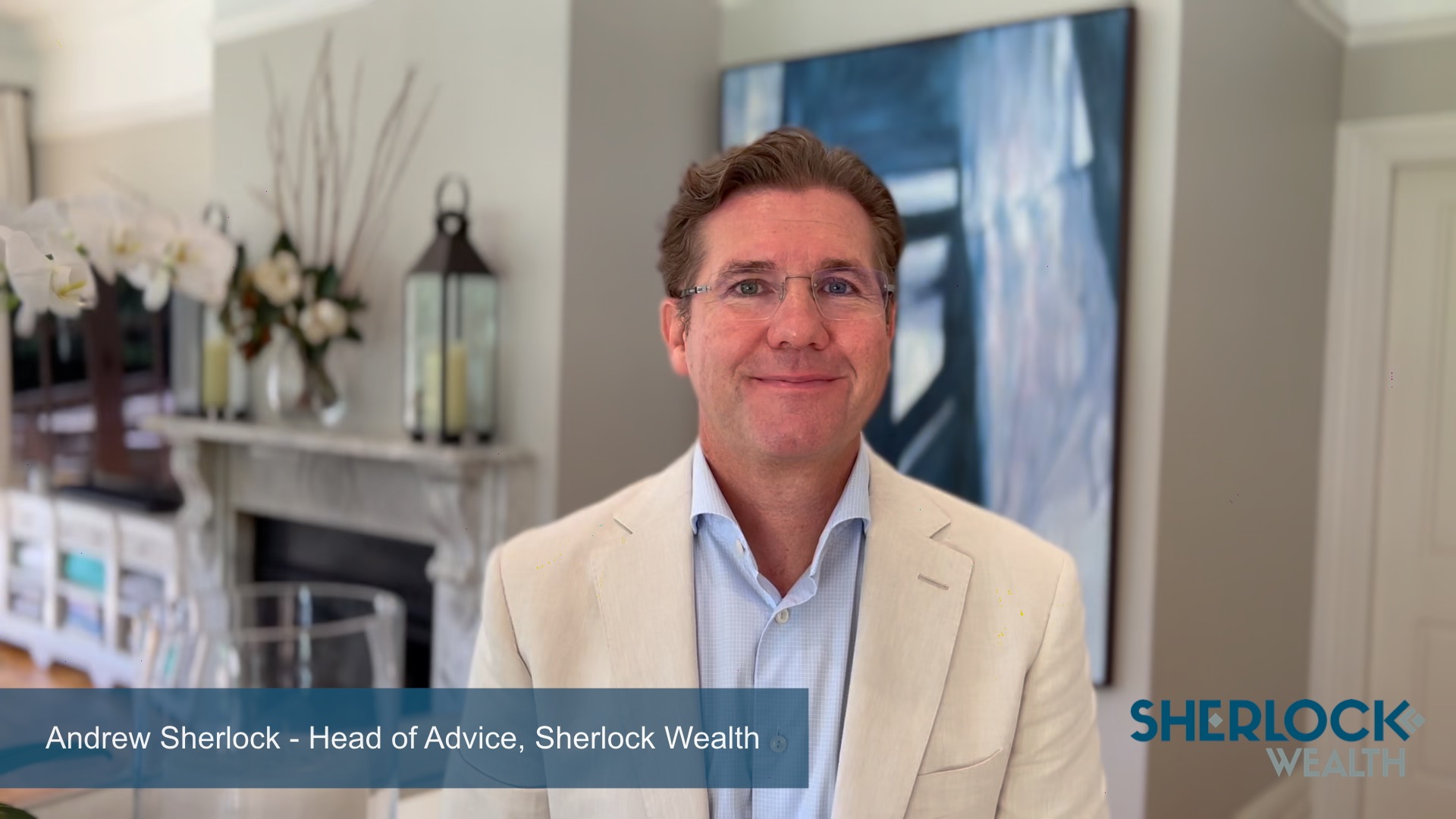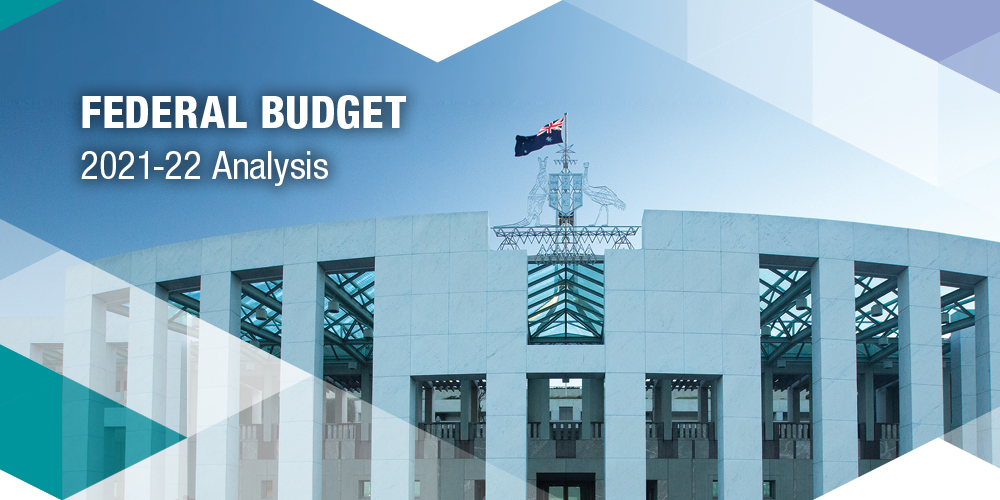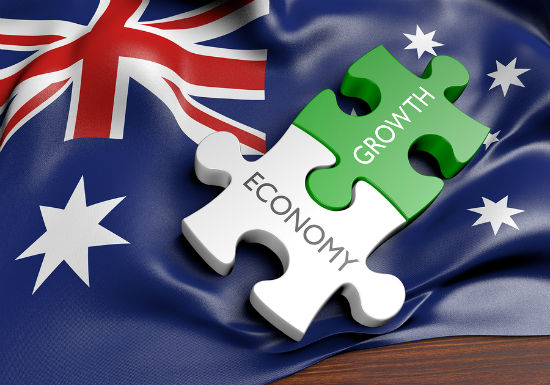
Volatility is part and parcel of investing so it’s important to put it into perspective and look at the full picture when thinking about your wealth, rather than focus on day-to-day market swings.

Volatility is part and parcel of investing so it’s important to put it into perspective and look at the full picture when thinking about your wealth, rather than focus on day-to-day market swings.

Rising inflation brings about concern for many, but a long-term focus—can help any investor navigate choppy waters.

A balancing act Billed as a Budget for families with a focus on relieving short-term cost of living pressures, Treasurer Josh Frydenberg’s fourth Budget also has one eye firmly on the federal election in May.

In this video, our Head of Advice, Andrew Sherlock, shares his views on the impact of inflation and the war in Ukraine over the short and long term.

Some of the last sitting days before this year’s Federal election saw changes to the tax and super rules finally pass through both houses of Parliament. Here’s a roundup of some of the key developments.

Treasurer Josh Frydenberg says rising confidence and a further unexpected drop in the unemployment rate are another sign there will be a strong economic recovery when virus lockdowns come to an end.

The recent sharp rise in bond rates may not be a big topic of conversation around the Sunday barbecue, but it has set pulses racing on financial markets amid talk of inflation and what that might mean for investors.
US 10-year government bond yields touched 1.61 per cent in early March after starting the year at 0.9 per cent.i Australian 10-year bonds followed suit, jumping from 0.97 per cent at the start of the year to a recent high of 1.81 per cent.ii
That may not seem like much, but to bond watchers it’s significant. Rates have since settled a little lower, but the market is still jittery.
Bond yields have been rising due to concerns that global economic growth, and inflation, may bounce back faster and higher than previously expected.
While a return to more ‘normal’ business activity after the pandemic is a good thing, there are fears that massive government stimulus and central bank bond-buying programs may reinflate national economies too quickly.
Despite short-term interest rates languishing close to zero, a sharp rise in long-term interest rates indicates investors are readjusting their expectations of future inflation. Australia’s inflation rate currently sits at 0.9 per cent, half the long bond yield.
To quash inflation fears, Reserve Bank of Australia (RBA) Governor Philip Lowe recently repeated his intention to keep interest rates low until 2024. The RBA cut official rates to a record low of 0.1 per cent last year and launched a $200 billion program to buy government bonds with the aim of keeping yields on these bonds at record lows.iii
Governor Lowe said inflation (currently 0.9 per cent) would not be anywhere near the RBA’s target of between 2 and 3 per cent until annual wages growth rises above 3 per cent from 1.4 per cent now. This would require unemployment to fall closer to 4 per cent from the current 6.4 per cent.
In other words, there’s some arm wrestling going on between central banks and the market over whose view of inflation and interest rates will prevail, with no clear winner.
Bond prices have been falling because investors are concerned that rising inflation will erode the value of the yields on their existing bond holdings, so they sell.
For income investors, falling bond prices could mean capital losses as the value of their existing bond holdings is eroded by rising rates, but healthier income in future.
The prospect of higher interest rates also has implications for other investments.
In recent years, low-interest rates have sent investors flocking to shares for their dividend yields and capital growth. In 2020, US shares led the charge with the tech-heavy Nasdaq index up 43.6%.iv
It’s these high growth stocks that are most sensitive to rate change. As the debate over inflation raged, the so-called FAANG stocks – Facebook, Amazon, Apple, Netflix and Google – fell nearly 17 per cent from mid to late February and remain volatile.v
That doesn’t mean all shares are vulnerable. Instead, market analysts expect a shift to ‘value’ stocks. These include traditional industrial companies and banks which were sold off during the pandemic but stand to gain from economic recovery.
Against expectations, the Australian residential property market has also performed strongly despite the pandemic, fuelled by low-interest rates.
National housing values rose 4 per cent in the year to February, while total returns including rental yields rose 7.6 per cent. But averages hide a patchy performance, with Darwin leading the pack (up 13.8 per cent) and Melbourne dragging up the rear (down 1.3 per cent).vi
There are concerns that ultra-low interest rates risk fuelling a house price bubble and worsening housing affordability. In answer to these fears, Governor Lowe said he was prepared to tighten lending standards quickly if the market gets out of hand.
Only time will tell who wins the tussle between those who think inflation is a threat and those who think it’s under control. As always, patient investors with a well-diversified portfolio are best placed to weather any short-term market fluctuations.
If you would like to discuss your overall investment strategy, please reach out to the Sherlock Wealth team here to help look at what’s right for you.
i Trading economics, viewed 11 March 2021, https://tradingeconomics.com/united-states/government-bond-yield
ii Trading economics, viewed 11 March 2021, https://tradingeconomics.com/australia/government-bond-yield
iii https://www.reuters.com/article/us-oecd-economy-idUSKBN2B112G
v https://rba.gov.au/speeches/2021/sp-gov-2021-03-10.html
vi https://www.washingtonpost.com/business/2020/12/31/stock-market-record-2020/
vii https://www.corelogic.com.au/sites/default/files/2021-03/210301_CoreLogic_HVI.pdf

Investing in recovery In his third and possibly last Budget before the next federal election,…

Treasury chief Steven Kennedy believes few countries have experienced what Australia has achieved in responding to last year’s recession – relatively good health outcomes, smaller economic impacts and now, rapid recovery.
“By any measure, Australian governments have struck the right balance,” Dr Kennedy told senators in Canberra.
“Our outcomes have been world leading, both in the health and the economic sphere.”
He said the economy has now recovered 85 per cent of the decline from its pre-COVID level of output.
“Growth will now begin to moderate as we move past the initial phase of the recovery,” he told a Senate estimates hearing on Wednesday.
“While the economy is recovering strongly, well supported by fiscal and monetary policy settings, we are well below our pre-pandemic economic growth path and it will take some time to fully recover.”
He said the peak in unemployment now appears to have passed following strong employment gains in recent months.
In the mid-year budget review released in December, Treasury had predicted the unemployment peaking at 7.5 per cent in the March quarter.
Instead, the unemployment rate has steadily fallen, dropping to 5.8 per cent in February.
“Nonetheless, while outcomes to date have tended to surprise on the upside, there is still significant spare capacity in the labour market,” Dr Kennedy said.
New figures show there remains strong demand to hire staff with job advertisements posted on the internet jumping by a further seven per cent in February to be 24.8 per cent over the year.
This is the 10th straight month job ads, as compiled by the National Skills Commission, have risen after striking a record low in April 2020 and the depths of last year’s recession.
Job ads grew in all eight broad occupational groups monitored by the commission and recruitment activity increased across all states and territories.
But Dr Kennedy expects the number of people defined as being in long-term unemployment – those who have been looking for but been without, paid work for a year or more – will jump in coming months.
“This reflects the flow-on impacts of the spike in unemployment at the onset of the crisis in March and April last year,” he said.
Meanwhile, Australia recorded its third consecutive goods trade surplus above $8 billion for the first time in history.
Preliminary trade figures show exports grew by two per cent in February, buoyed by a record $1.3 billion of cereals exports, which helped offset a 12 per cent decline in iron ore shipments to China.
Imports also grew by two per cent, led by a 24 per cent increase in road vehicle inbound shipments.
Colin Brinsden, AAP Economics and Business Correspondent
(Australian Associated Press)

Australians are generous when it comes to opening their wallet for a good cause. But you may have reached a point in life where you want to make a more substantial contribution with control over how your money is spent. You may also wish to get your children involved to instil shared values.
While it hasn’t received much publicity, increasing numbers of Australians are using charitable trusts to give in a more planned and tax-effective way.
The turning point came in 2001 when the Howard Government introduced the Private Ancillary Fund (PAF) with the aim of encouraging more individual and corporate philanthropy. PAFs are charitable trusts that can be used by an individual or family for strategic long-term giving.
Since then, the number of PAFs and the amount of money contained in them has grown steadily. In early 2018, JB Were reported that there were 1600 PAFs, housing $10 billion and distributing $500 million a year.i
According to Philanthropy Australia, in the 2015-2016 financial year 14.9 million Australians collectively donated $12.5 billion to charities and not-for-profits (NFPs).ii The median donation was $200 and 4.51 million taxpayers claimed for a ‘deductible gift’ on their tax return, highlighting that you don’t have to be wealthy to live generously.
Though donations to appropriately accredited charities and not-for-profits are tax-deductible, the figures indicate two-thirds of taxpayers don’t bother to claim. It’s well worth keeping track of receipts so you can claim when you think that, for example, a single donation of $5000 to a charity or NFP in a financial year will reduce your taxable income by $5000.
A core principle of tax-deductible philanthropy is that the giver shouldn’t stand to receive any material benefit. For example, if you buy tickets in a raffle run by a charity you can’t claim a tax deduction on the cost of the tickets. In order to receive a tax deduction for your donation, the recipient must also be registered as a deductible gift recipient (DGR).
There are many ways to be charitable but the impact on your tax bill will vary depending on how you go about it.
These days, people who want to take philanthropy to the next level with an ongoing, tax-effective approach have a variety of trusts to choose from.
PAFs are the best-known of the new breed of trusts. The money placed in a PAF is tax-deductible and assets in the fund aren’t subject to income or capital gains tax (but do qualify for franking credits).
Let’s say a dentist sets up a PAF and gifts half his $500,000 annual income into the fund where it’s invested in a diversified portfolio. The dentist’s taxable income now drops to $250,000. What’s more, no tax is paid on the returns made on the $250,000 that has been invested in the PAF. The dentist has to distribute a minimum of five per cent of their PAF’s net asset value annually, or a minimum of $11,000. After meeting that requirement, the dentist has a relatively free hand about which charities to support and how much they receive.
The Public Ancillary Fund (PuAF)
PuAFs work the same way as PAFs but operate on a larger scale. For example, 10 dentists may set up a PuAF to finance the building of dental hospitals in Africa. As well as gifting part of their incomes, the 10 dentists can (in fact, are obliged to) invite the general public to make tax-deductible donations to their PuAF.
Testamentary Trust (or Will Trust)
These are used by individuals wanting to leave money in their will to a specified charitable purpose. The two advantages of this type of trust are that the trustee(s) can distribute the income generated by the trust in a way that minimises the tax burden of beneficiaries, and the assets in the trust can’t be accessed by parties such as creditors and the divorcing partners of a beneficiary.
Like many parts of the economy, the charity sector has been ‘disrupted’ in recent years, with a stronger focus on donor engagement.
Organisations such as Effective Philanthropy and Effective Altruism have emerged to analyse how the charity dollar can be best spent. While crowdfunding platforms such as GoFundMe have emerged to facilitate, for example, the funding of individual medical procedures.
As a result, many philanthropists have gone from simply writing cheques to directing – or at least monitoring – how their money is spent.
Your contribution is most likely to be well spent if you donate it to an organisation that defines its mission clearly, has measurable goals, can demonstrate concrete achievements and is transparent about its finances (e.g. has annual reports available on its website).
Few people give to get a tax deduction but by supporting good causes in a tax-effective manner you can achieve a bigger bang for your philanthropic buck. If you would like to know more about tax-effective giving, give us a call.
| Some examples of philanthropists making their mark | ||
| James & Gretel Packer |
National Philanthropic Fund (2014-) |
$200 million to the arts and Indigenous education by 2024 |
| Paul Ramsay | Paul Ramsay Foundation (2014-) |
$3 billion to improve health and education outcomes for Australians |
| Andrew Forrest & his wife Nicola | Minderoo Foundation (2001-) |
$645 million to drive social change encompassing education, research and Indigenous affairs |
| ‘Pokies King’ Len Ainsworth | ‘Giving Pledge’ (2017-) |
$500 million to support primarily medical and health-related charities |
Are you interested in creating a PAF to support your charity contributions, reach out to the Sherlock Wealth team to discuss your unique situation here
i https://www.strategicgrants.com.au/au/free-resources/blog/19-blog-kate/280-grantseeking-donor-giving
ii http://www.philanthropy.org.au/tools-resources/fast-facts-and-stats/